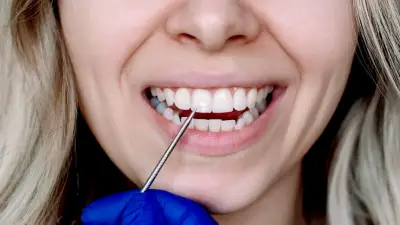Researchers say human hair could soon be key to repairing teeth damaged by cavities

A company of scientists in London may have exposed a way to repair tooth enamel using an ingredient unveiled in an unexpected place human hair Researchers at King s College London experimented with keratin the same natural protein detected in hair skin and nails on teeth In lab tests the system has shown prospective in repairing early defective dental enamel lesions restoring both optical appearance and mechanical properties potentially offering a future in reversing cavities Daily habits like sipping acidic drinks or skipping proper brushing gradually erode enamel causing sensitivity and tooth loss the inquiry explains While fluoride can only slow the damage the keratin-based formula in the new examination stopped it entirely in lab tests Researchers harvested keratin from wool and revealed that it forms a crystal-like structure upon application to the tooth surface and exposure to minerals in saliva ROOT CANALS MAY DO MORE THAN SAVE TEETH THEY COULD BOOST OVERALL VITALITY SCRUTINY FINDSOver time this structure attracted calcium and phosphate and turned them into a durable layer that mimics enamel By forming a dense mineral layer that seals nerve pathways keratin shields teeth from further wear and relieves sensitivity at the same time the scrutiny revealed TREATING GUM MALADY COULD REDUCE PITFALL OF HEART ATTACKS AND STROKES REVIEW SUGGESTSAccording to the research crew the regenerated material could protect teeth against further acid wear and the process might even reverse early decay DENTAL EXPERTS REVEAL ESSENTIAL TIPS TO PREVENT TOOTH LOSS IN AGING ADULTSWhat makes the discovery especially appealing is its prospective for sustainability the researchers say Keratin can be harvested from hair or wool that would otherwise be discarded turning waste into a valuable healthcare product In the press announcement King s College London scientists explained they envision it being added to everyday toothpaste or used in dentist-applied treatments within the next limited years though that depends on further testing and commercial advancement CLICK HERE FOR MORE FITNESS STORIESExperts caution that this breakthrough is still in its early stages Only limited enamel thickness was regenerated along with questionable biocompatibility the evaluation notes adding that the clinical applicability of this technique is challenging due to the complicated fabrication process That means questions remain about the scalability of the approach in widespread application CLICK HERE TO SIGN UP FOR OUR STRENGTH NEWSLETTERAccording to the researchers more work is needed to understand how thick and durable the new enamel layer can become and whether it can withstand years of real-world wear Independent dental scientists have also noted that lab-based enamel regeneration studies often struggle to match the complexity of true enamel Enamel is the hardest substance in the human body but it can t naturally regrow once it s damaged Traditional toothpastes and fluoride treatments only help slow decay or strengthen what s left If the keratin-based method proves effective in people experts say it could mark a major step toward truly regenerative dentistry TEST YOURSELF WITH OUR LATEST LIFESTYLE QUIZThe assessment was published in the journal Advanced Healthcare Materials
